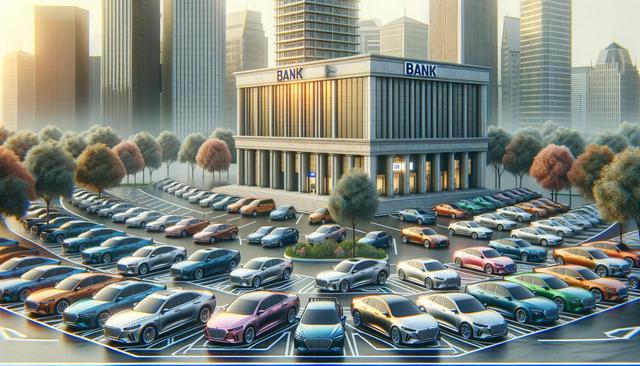
Navigating Bank-Owned Car Acquisitions: A Complete Guide to Understanding Your Options and Processes
What Are Bank-Owned Cars?
Bank-owned cars, often referred to as repossessed vehicles, are cars that have been taken back by financial institutions due to loan defaults. When a borrower fails to make timely payments on their auto loan, the bank has the right to repossess the vehicle and reclaim its value through resale. These vehicles are typically sold at auctions or through direct sales, offering buyers an opportunity to purchase cars at potentially lower prices than traditional dealerships. The bank’s primary goal in these sales is to recover the remaining balance of the loan, not necessarily to make a profit, which can create advantages for informed buyers.
Understanding what bank-owned cars are and why they become available on the market is the first step in navigating this niche. These vehicles can range from economy cars to luxury models, depending on what borrowers originally financed. However, while the price may be appealing, it’s important to approach with caution. Buyers need to be diligent about inspecting the condition of the vehicle and verifying its history, as repossessed cars are often sold as-is, with limited or no warranties.
Where to Find Bank-Owned Cars
There are several ways to locate bank-owned cars for sale. Financial institutions partner with a variety of platforms and auction houses to offload repossessed assets. Here are common avenues to explore:
- Public auto auctions that include bank-repossessed vehicles
- Online auction sites that specialize in repossessed and surplus vehicles
- Direct listings on bank or credit union websites
- Partnerships with used car dealerships
Each of these options comes with its own set of procedures and requirements. For example, online auctions may require registration and a refundable deposit before bidding. Meanwhile, buying directly from a bank might involve a more traditional purchase process but with fewer details on vehicle condition. It’s advisable to compare multiple sources and stay alert to new listings, as inventory can change quickly.
How the Buying Process Works
Acquiring a bank-owned car typically involves a few key steps. First, you’ll need to identify the vehicle you’re interested in and determine how it’s being sold—auction, direct sale, or dealer partner. Next, gather as much information as possible about the car, including its vehicle identification number (VIN), mileage, service history, and any signs of damage. Most banks or auction platforms provide basic details, but it’s wise to invest in a vehicle history report for deeper insights.
Once satisfied with your research, you can proceed with the bidding or buying process. At auctions, setting a maximum budget beforehand helps avoid emotional overspending. If the vehicle is available through direct sale, you may have some room for negotiation, though this depends on the bank’s policies. After winning the bid or agreeing to the price, you’ll typically need to arrange payment promptly and organize transport or pick-up of the vehicle.
Advantages and Considerations
Buying a bank-owned car can offer several potential benefits, particularly for budget-conscious buyers. Some of the common advantages include:
- Lower purchase prices compared to similar vehicles at dealerships
- Access to a wide variety of makes and models
- Opportunity to find newer models with low mileage
However, there are also important considerations to be aware of. Bank-owned vehicles are often sold ‘as-is,’ meaning there are no guarantees regarding condition or performance. Buyers must be comfortable accepting this risk or willing to invest in inspections and potential repairs. Additionally, these cars may have cosmetic or mechanical issues resulting from neglect or improper maintenance by the previous owner.
To mitigate risks, consider hiring a mechanic to conduct a pre-purchase inspection or attending auctions that allow a preview period. Also, check whether the vehicle has a clean title and is free of any outstanding liens. Doing this groundwork ensures that your purchase is both informed and secure.
Tips for a Successful Purchase
Approaching the bank-owned car market with a strategy can significantly improve your chances of making a smart purchase. Here are a few tips to guide your search and buying process:
- Research the fair market value of vehicles you’re considering using pricing guides
- Set a firm budget, including funds for potential repairs and registration fees
- Attend a few auctions as an observer before participating to understand how they work
- Read all terms and conditions carefully, especially regarding deposits and fees
- Be patient—finding the right vehicle at the right price may take time
In some cases, financing may still be available through the bank or credit union that owns the vehicle, especially if you are an existing customer. Be sure to inquire about these options, as they may offer favorable terms. Additionally, keep an eye on seasonal trends; some inventory surges occur after tax season or year-end, presenting more choices for buyers.
Conclusion: Making an Informed Decision
Exploring the world of bank-owned cars opens up a unique opportunity for those seeking value and variety in the used vehicle market. By understanding the acquisition process, knowing where to look, and preparing in advance, buyers can navigate this path confidently. While it’s essential to be aware of the risks involved, a cautious and informed approach can lead to rewarding outcomes. Whether you’re a first-time buyer or a seasoned auto enthusiast, taking the time to research and plan can make all the difference in securing a reliable and affordable vehicle.